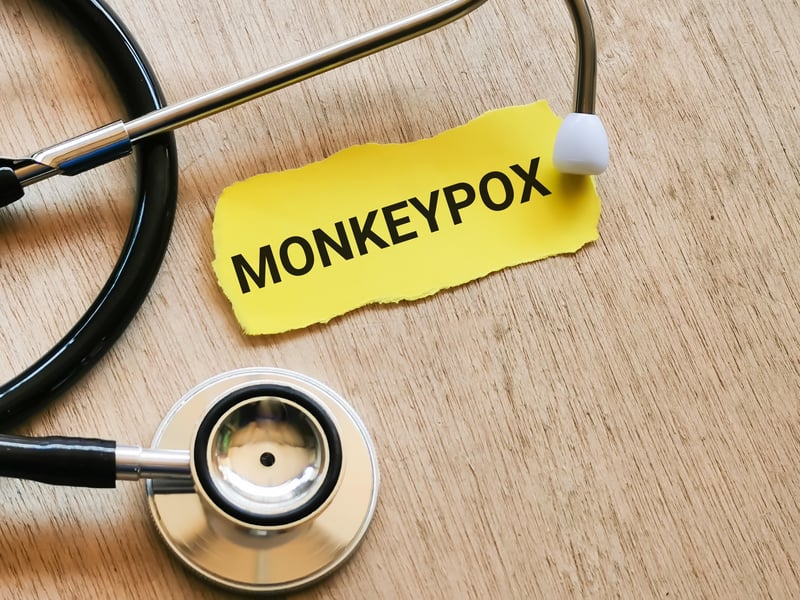Manténgase sano!

- By Cara Murez HealthDay Reporter
- Posted September 1, 2022
A Dermatologist on Recognizing the Monkeypox Rash
Anyone who gets a new, unexplained skin rash should call their doctor and get medical care in case it's monkeypox, public health officials advise.
How can you tell when it is time to worry?
The American Academy of Dermatology offers some tips for helping distinguish monkeypox from other health issues that cause rashes and for getting care.
"This time, monkeypox looks different," said board-certified dermatologist Dr. Esther Freeman. She is director of Global Health Dermatology for Massachusetts General Hospital and Harvard Medical School, as well as a member of the American Academy of Dermatology's Monkeypox Task Force.
While past outbreaks of monkeypox have started with fever and flu-like symptoms and a rash that could include more than 200 bumps, this time it's more common for people with monkeypox to get fewer skin bumps. They may also not have fever or flu-like symptoms.
"During this particular outbreak, we're seeing that the rash may start in the groin, genital region, or around the anus -- and sometimes stay in the spot that it started instead of spreading," Freeman said in an academy news release.
People may have only one or two blisters, pus-filled bumps or open sores, which can be very painful.
A dermatologist can narrow down the causes of a rash by its pattern on the skin and where it appears, confirming suspected monkeypox with a swab sent to a lab.
"While the monkeypox rash can be mistaken for chickenpox, shingles or herpes, there are differences between these rashes," Freeman said.
 Monkeypox rash on a hand. Source: U.S. Centers for Disease Control and Prevention
Monkeypox rash on a hand. Source: U.S. Centers for Disease Control and Prevention
Monkeypox is contagious and can spread until the bumps are gone, which is about two to four weeks.
"Not every new rash is monkeypox. However, if you do think you have monkeypox, it's important to see your doctor quickly. Patients who delay getting medical attention may be diagnosed later when fewer treatment options are available. Waiting also means that you can expose more people to the virus, so family and others may develop monkeypox," Freeman said.
Patients should call their doctor's office instead of going in, explaining symptoms first and then getting advice about what to do.
People can contract this virus in several ways, including through touching the rash or scabs of an infected person during intimate contact. This is the most common type of transmission. The virus can also less commonly spread through respiratory droplets. It can also be passed by touching unwashed clothing or bedding from an infected person.
Monkeypox can also be spread by animals in areas where the virus is endemic, including central or western Africa, through a bite or scratch, by handling a live or dead infected animal, eating an infected animal or using a cream or powder made from the animal.
People vaccinated against smallpox have less risk of developing monkeypox. Most people under age 50 have not received this vaccine because the vaccines stopped being routinely given in the United States in 1972. By then, smallpox had been eradicated.
Though no specific treatment for monkeypox is approved by the U.S. Food and Drug Administration, but people at risk of developing severe disease may receive treatment with an antiviral medication for smallpox known as TPOXX.
More information
The U.S. Centers for Disease Control and Prevention has more on monkeypox.
SOURCE: American Academy of Dermatology, news release, June 2022

